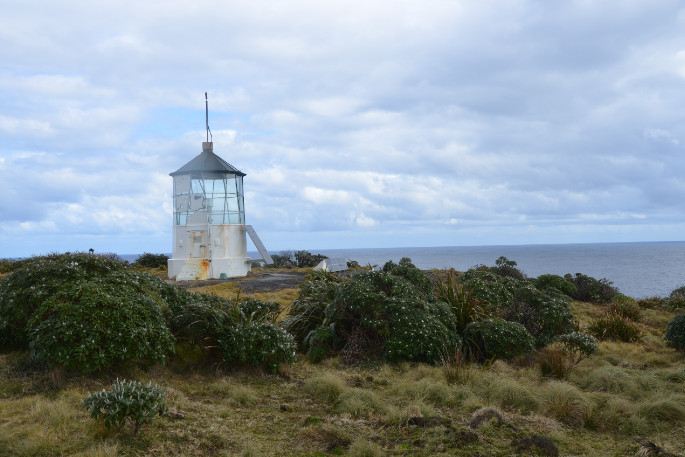Anyone looking for a trip with a difference should consider an expedition cruise of Fiordland's southern fiords.
The trip, with Heritage Expeditions, caters for all levels of fitness and ability. There are long rugged bush hikes and shorter walks, with most involving mud and slopes. There's also the option of zodiac cruises along the many rivers, or you can stay on the boat and enjoy the views from the comfort of the top deck.
Fiordland is one of New Zealand's most remote areas and a UNESCO World Heritage site. To get to our boat (no, not a ship) for the beginning of our cruise, we started our day with a helicopter transfer from Te Anau to Preservation Inlet, where the Heritage Explorer was moored.
The weather was perfect for the flight up Lake Manapouri and across the Southern Alps, which in mid-September were covered with a sprinkling of snow. Then it was a swoop down and the helicopter landed perfectly on a small beach where Heritage Explorer's skipper, Jim, and expedition crew were waiting for us.
A short trip across the inlet and we all aboard our home for the next six days. The boat carries 18 passengers and six crew.
In such a pristine area, all of our outer gear had to be inspected for seeds, dirt and any animals that might have hitched a ride. Our reward that night was a delicious dinner of hapuka created by French chef Seb. It was a taste of the scrumptious meals to come.
Although remote, there were several crayfish boats around and the crew did a bit of bartering before 40 fresh crayfish were landed on the boat - more than enough for dinner the next night.
The Southern Fiords is an area rich in history, wildlife and abundant virgin native bush, mainly beech trees, rimu, totara, tree daisy, rata and tree fuchsias.
On the first morning we landed at the site of an old brick chimney in Preservation Inlet. The chimney was constructed in the early 1900s to extract gold and silver from one of the streams.
The Tarawera mine was not successful and closed a few years later. Most of the remains were removed except for the brick chimney, which was restored in 2015 and is now a focal point for visitors.
In the afternoon we followed the old tractor track to Puysegur Point to the lighthouse. This was home to three permanent lighthouse keeper families, but due to its remoteness it was automated in 1990. The buildings were bulldozed into the sea and all that remains now is the lighthouse and a few concrete slabs where the houses once were.
The strong wind does not deter sand flies from making a meal out of visitors.
Not being such an intrepid traveller, a sedate zodiac cruise along the Mulamula River was the option for the next day. It was a chance to see ancient untouched forest, waterfalls and many different sea birds, and we were not disappointed.
That afternoon we left the calmness of Preservation Inlet and headed out to the wilds of the open sea for the four-hour trip to Dusky Sound. It was a bit of a rough ride, although expedition leaders Lindsay and Whitey reckoned 'it was a reasonably calm trip”.
Being Fiordland, the sunshine could not last and soon the rain appeared, which gave a whole new perspective on the scenery. There cannot be lush green rain forest without a lot of rain.
Dusky Sound is where Captain Cook tied his ship, the Resolution, to a rata tree in 1773 so his men could rest and relax for a few months after a long voyage from Antarctica. The original rata branch has long gone, but there is one there that looks very similar.
On the zodiac cruise around the smaller islands that afternoon we came across many of last year's seal pups which, like all adolescents, were having fun in the water and checking out the beings in their colourful wet weather gear taking photographs.
Other highlights were Luncheon Cove, where the first ship wreck in New Zealand occurred, and the house site of famous botanist Richard Henry, who saw the need to relocate native flightless birds to islands to save them from introduced pests in the late 1800s. The chimney from his house and the mound where he kept the birds for relocation can still be seen.
Once again we ventured out into the open sea for two hours to the calmness of Dagg Sound, where the water depth drops to thousands of metres. With its steep cliffs and large rainfall, we were presented with a spectacular display of waterfalls.
The last fiord we visited at the end of the cruise was at Doubtful Sound. With overcast skies and rain, it was a moody, enchanting, remote and beguiling part of New Zealand.
We cruised up to the head of Doubtful Sound where we said our farewells, disembarked for the trip back to Te Anau by bus and boat and, sadly, back to normal life.
Heritage Expedition cruises cater for those that want the luxury of good food, good wine, comfortable beds and good company, but also want to experience the wilds of New Zealand.
A hot shower after a few hours out in the rain was always welcome. Lindsay and Whitey, the experienced expedition leaders, had an in-depth knowledge of the area and each evening would go over what we had seen that day and what to expect the next. Along with skipper Jim and engineer Karl, they were always on hand to help passengers on and off the zodiacs and nothing was a bother.
This trip can be as strenuous or as relaxing as you want - it's your choice. But don't forget the insect repellent!
While the borders are closed due to Covid-19, now is a good time to explore New Zealand and all it has to offer, which is a lot.

